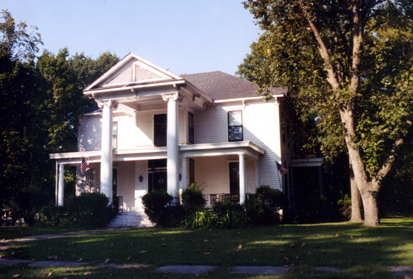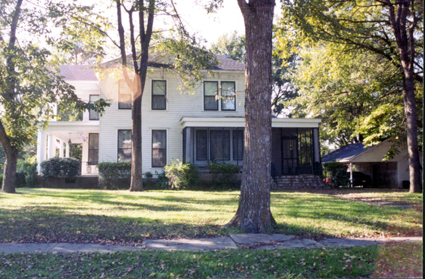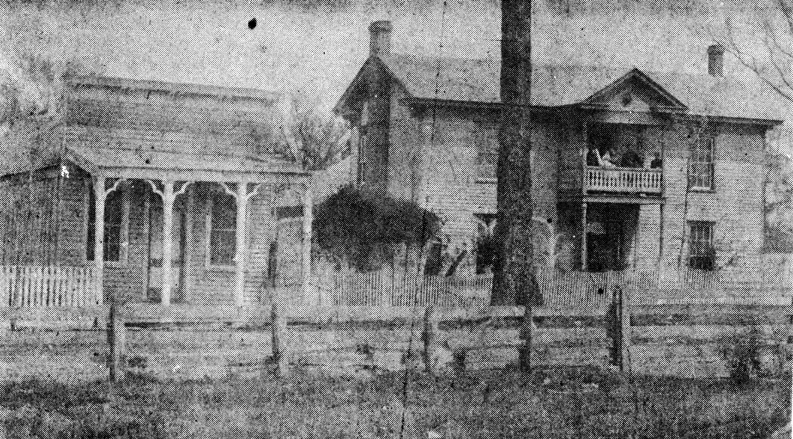
The Dowager of Market Street
Sheeks House, Corning
The Sheeks House was built in 1872 by a prominent Arkansas
attorney, E. Foster Brown. At age
fourteen he moved with his family to Randolph County, Arkansas.
In 1862, he enlisted in the Confederate Army and served throughout the
Civil War. Afterwards he returned
home to complete his education by studying law.
Brown was admitted to the Arkansas Bar in 1871.
After a year of further study in Lebanon, Tennessee, Brown began
practicing law in the newly organized Clay County.
Despite his youth and inexperience, Brown was elected as a
delegate to Arkansas’ 1874 constitutional convention. His active participation contributed to the formulation of
the document which still governs Arkansas a century later.
In 1875, Brown served as state senator from the first district, and in
1878 he was elected as prosecuting attorney for Arkansas’ Second Judicial
District. In 1883, Brown moved to
Jonesboro in Craighead County, thus terminating his political career in Clay
County.
In the early 1870s, Foster Brown built a two story frame
house on Market Street in Corning. On
the lot just west of the house was his law office.
According to Mrs. Edward V. Sheeks, Jr., Brown sold his house to E. V.
Sheeks in 1878. The house was
ideally located for Sheeks whose mercantile store was located just east of the
house.
Edgar Van Buren Sheeks was a native of Indiana who moved to
north Arkansas as a young man. On
arriving in Clay County in the late 1870s, Sheeks opened a saw mill just north
of Corning. Later he went into
partnership with George W. Stephens to open Sheeks-Stephens Store on the
northeast corner of Corning’s courthouse square. Sheeks and Stephens also owned the first cotton gin in
Corning. In 1906, Sheeks was the
manager of the electric light plant in Corning. His many successful business ventures made E. V. Sheeks an
important factor in the early economic life of Clay County.
The Sheeks House was originally a provincial style house
distinguished by the projecting center bay.
The two story house had a one story wing on the rear elevation, thus
giving the structure an ell-shape floor plan.
In 1908, the house was remodeled by adding both a two story and one story
addition at the rear, and a two story portico and one story porch on the façade.
The alteration of the house made it more in vogue with early twentieth
century architectural styles.
Thought architecturally interesting, the significance of the Sheeks House lies in its association with two men prominent in Clay County history. The house typifies the home of a successful northeast Arkansas businessman at the turn of the century. Though the original house was remodeled in the early twentieth century, the house has remained unchanged since 1908. It retains many original features and still rests on its original site across from the Clay County Courthouse. The 1908 alteration illustrates the adaptation of a structure to changing architectural styles.

The Dowager of Market Street
From the Clay County Courier:
"The Dowager is certainly the most fitting name for the Sheeks residence that has graced the Market Street site since the town of Corning was set up as the County Seat of Clay County in 1873. Built in that year by E. Foster Brown, the house passed into the possession of the Sheeks family in the late [eighteen-]seventies when Attorney Brown moved to Jonesboro. This view was taken in the early [18]80s and the Sheeks family is seated on the upstairs porch.
Attorney Brown built the adjoining office at the same time. It was sold to Judge F. G. Taylor in the [18]90s and moved to West Second Street where it served as the Taylor Law Office until razed in the [19]30s."
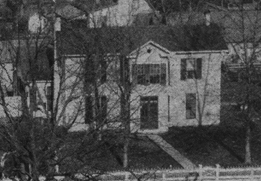
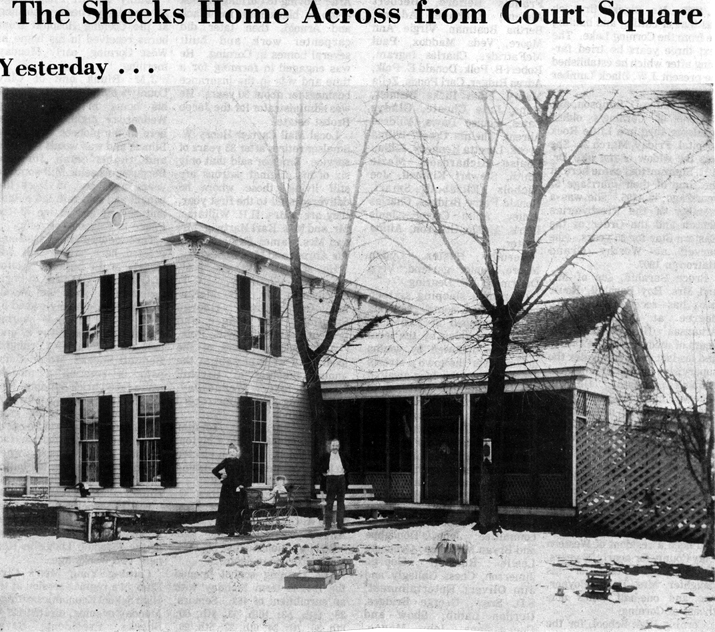
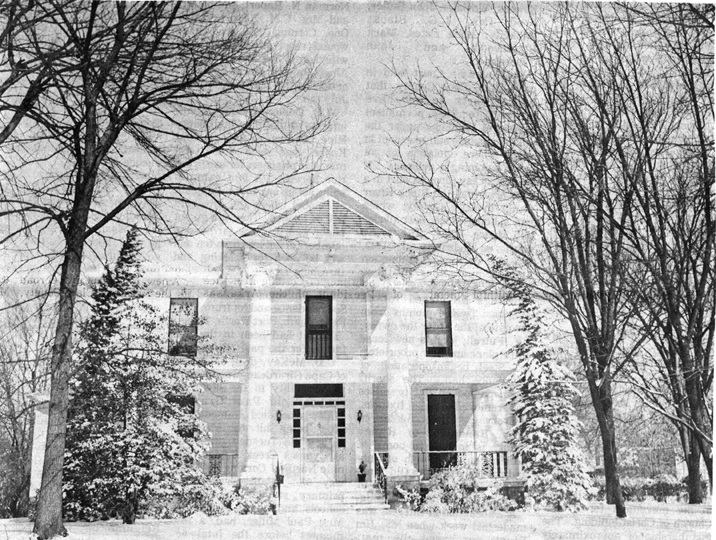
Above photo taken ca. 1973.
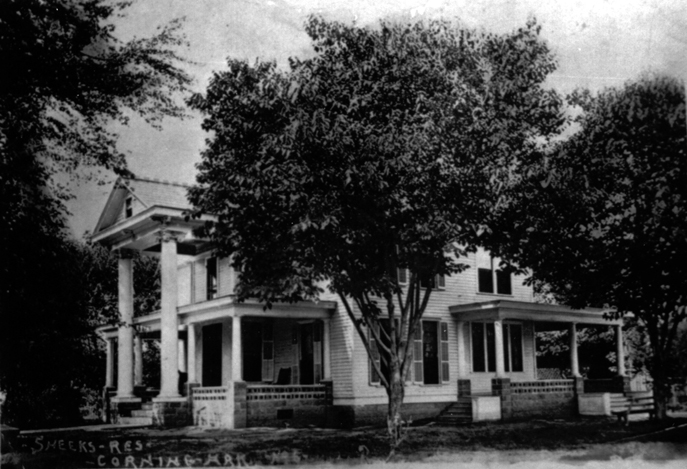
Above photos are from the Clay County Courier, submitted by Danny Moore
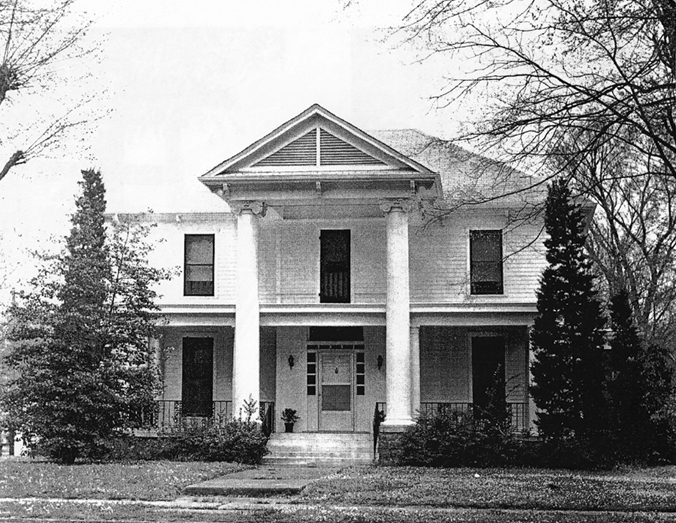
The above photo was used in the application to place the house on the National
Historic Register in 1975.
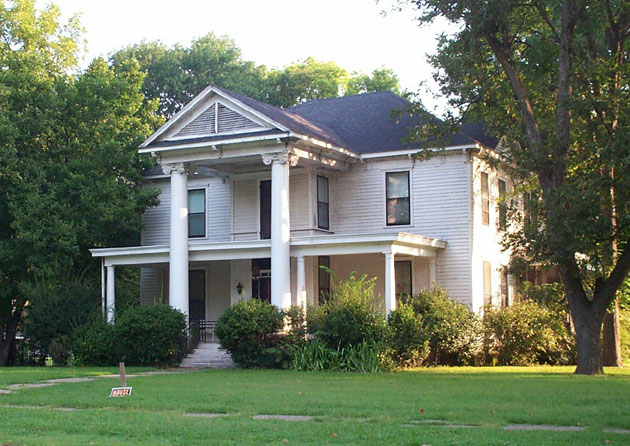
Above photo taken in August, 2006 and submitted by Mark
Frazier.
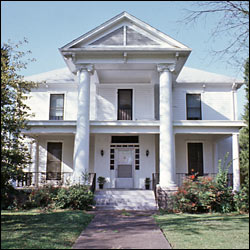
Photos below taken in July, 2003, submitted by Scot Stout.
